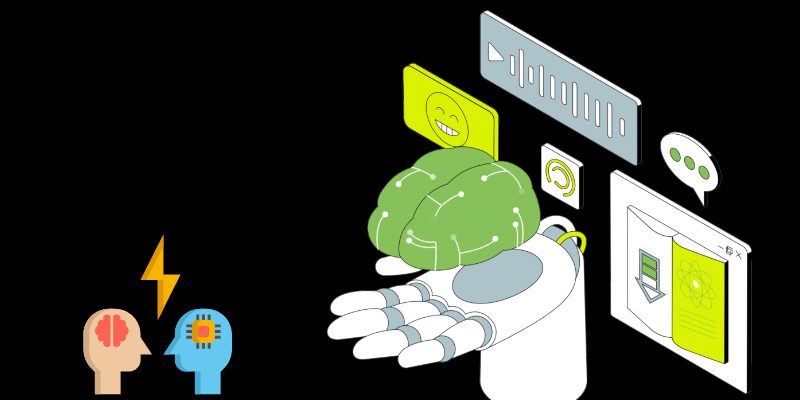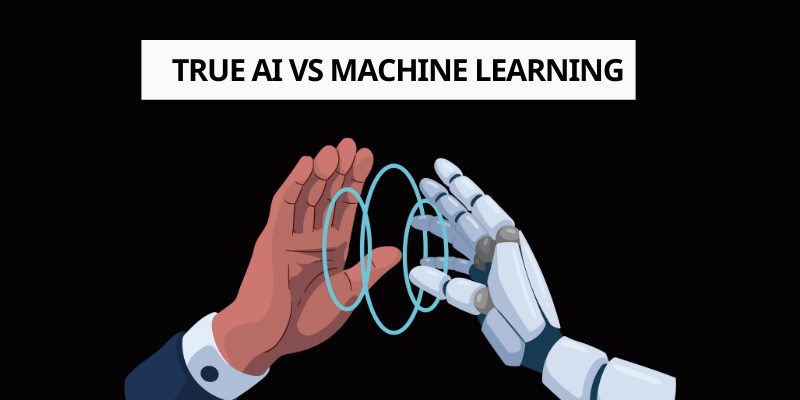In the fast-evolving world of cryptocurrency and blockchain technology, terms like True AI vs Machine Learning often surface in discussions about what’s driving the next wave of innovation. As a crypto enthusiast or investor, you’ve likely encountered these buzzwords—perhaps in the context of trading algorithms, DeFi protocols, or NFT marketplaces. But what do they really mean, and how do they shape the financial tools and strategies in our space? Let’s break it down with a clear-eyed perspective, grounded in the kind of insight you’d expect from a seasoned market analyst.
Defining the Landscape: AI in Crypto’s Context
At its core, True AI refers to a vision of artificial intelligence that mirrors human-like reasoning—capable of independent thought, adaptability, and decision-making without rigid programming. Picture a system that doesn’t just follow coded instructions but learns, evolves, and even anticipates market shifts in ways that feel almost intuitive. In contrast, Machine Learning (ML) is a more focused subset of AI, where algorithms are trained on data to identify patterns and make predictions. Think of ML as the engine behind your favorite crypto trading bot, crunching historical price data to spot trends or optimize trades.
The distinction matters because, in the crypto world, precision and foresight are everything. Whether you’re staking tokens, arbitraging across exchanges, or navigating the volatility of memecoins, understanding True AI vs Machine Learning can clarify what tools are powering your strategies—and what’s still on the horizon.

Machine Learning: The Workhorse of Today’s Crypto Markets
Right now, Machine Learning is the backbone of many crypto applications. It’s what fuels predictive models for price movements, risk assessment in lending protocols, and fraud detection on exchanges. For instance, ML algorithms analyze vast datasets—trade volumes, wallet activity, even social media sentiment—to forecast Bitcoin’s next swing or flag suspicious transactions. These systems thrive on structured data and predefined goals, making them incredibly effective for tasks like:
- Trading Bots: ML-driven bots execute high-frequency trades, exploiting tiny price inefficiencies across decentralized exchanges like Uniswap or centralized platforms like Binance.
- Portfolio Optimization: Robo-advisors use ML to balance crypto portfolios, weighing volatility and correlation to maximize returns.
- Security: ML models detect phishing attempts or anomalous smart contract behavior, protecting your assets in a world rife with hacks.
The catch? ML is only as good as the data it’s fed and the humans who frame its objectives. It’s not “thinking” in the way we imagine True AI. Instead, it’s a highly sophisticated calculator, bound by its training and unable to step outside its programming.
True AI: The Holy Grail for Crypto’s Future
Now, let’s talk about True AI—the speculative frontier that gets every crypto visionary excited. If Machine Learning is a trusty spreadsheet, True AI is the strategist sitting at the boardroom table, capable of crafting entirely new approaches without being spoon-fed instructions. In a crypto context, True AI could revolutionize how we interact with markets and technology:
- Autonomous DeFi Protocols: Imagine a decentralized lending platform that doesn’t just follow coded rules but dynamically adjusts interest rates, collateral requirements, and risk models based on real-time global economic signals—without human oversight.
- Creative NFT Ecosystems: True AI could generate not just derivative digital art but entirely new genres of NFTs, tailored to cultural trends it independently identifies.
- Market Prediction Beyond Data: Unlike ML, which leans on historical patterns, True AI might intuit black-swan events—say, regulatory shifts or technological breakthroughs—by synthesizing unstructured information from news, forums, and beyond.
The dream of True AI is seductive because it promises to untether crypto innovation from human limitations. But here’s the reality check: we’re not there yet. What’s marketed as “AI” in most crypto projects today is almost always Machine Learning—powerful, but far from the self-aware systems sci-fi has us dreaming about.

Why It Matters to Crypto Investors
As someone tracking the pulse of the crypto market, you’re not just here for tech jargon—you want to know how True AI vs Machine Learning impacts your wallet. Here’s the breakdown:
Opportunity Spotting: ML tools are already democratizing access to sophisticated trading strategies. Platforms like 3Commas or Chainlink’s data oracles rely on ML to give retail investors an edge once reserved for hedge funds. True AI, when it arrives, could level the playing field further, potentially creating autonomous agents that act as your personal market strategist.
Risk Management: ML excels at identifying patterns of fraud or market manipulation, but it struggles with unprecedented scenarios (think Terra’s collapse). True AI could theoretically anticipate such outliers, offering a new layer of protection for your holdings.
Hype vs. Substance: The crypto space loves hype, and “AI” is a shiny label slapped on many a whitepaper. Understanding True AI vs Machine Learning lets you cut through the noise. Is that new DeFi project touting “AI-driven yields” using cutting-edge ML or just rehashing basic algorithms? Your due diligence depends on knowing the difference.
The Road Ahead: Bridging the Gap
The crypto market thrives on innovation, and the interplay of True AI vs Machine Learning will shape its next chapter. For now, Machine Learning is delivering tangible value—streamlining trades, securing networks, and powering analytics. But the pursuit of True AI holds the potential to redefine what’s possible, from fully autonomous DAOs to markets that adapt in real-time to global events.
As an investor, your job is to stay sharp. Leverage ML tools to optimize your trades today, but keep an eye on projects pushing toward True AI—they could signal the next bull run’s biggest winners. Just don’t fall for every “AI-powered” pitch. In crypto, as in finance, the real alpha lies in separating signal from noise.

